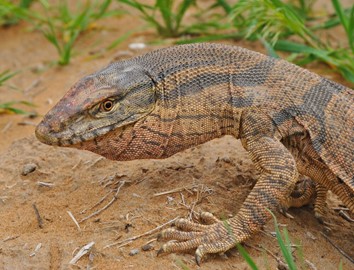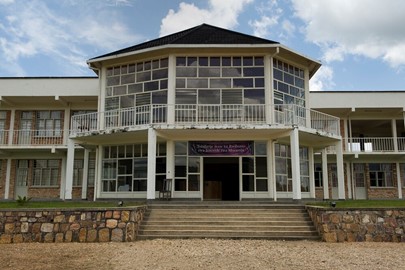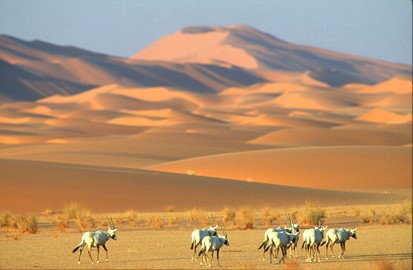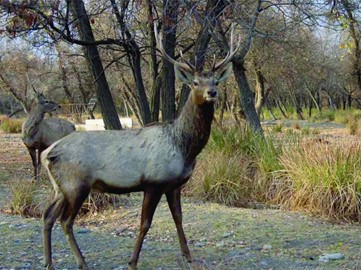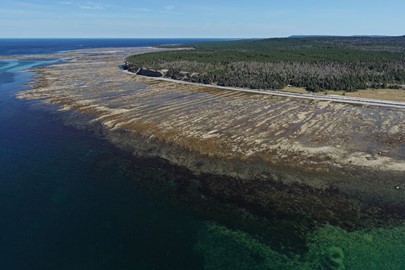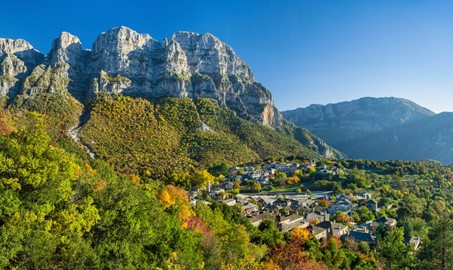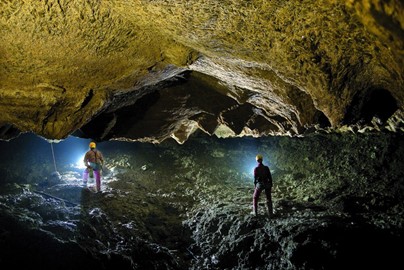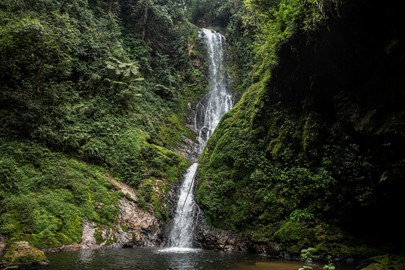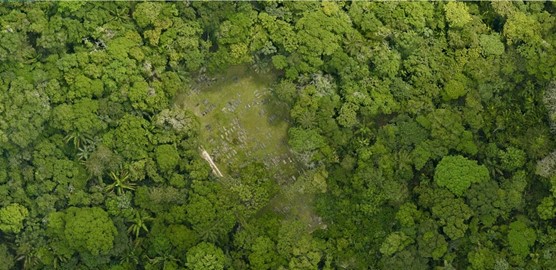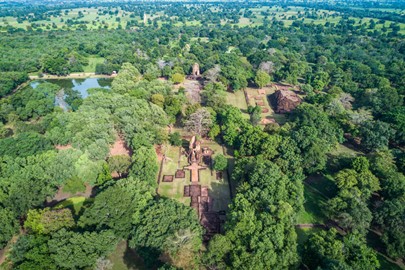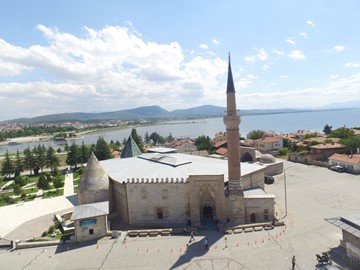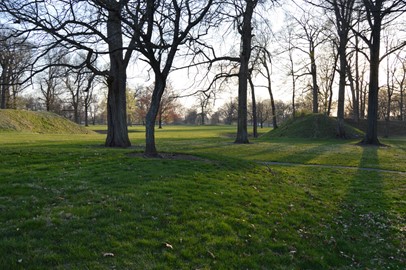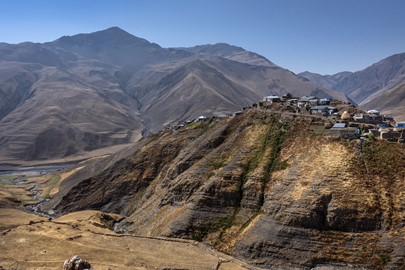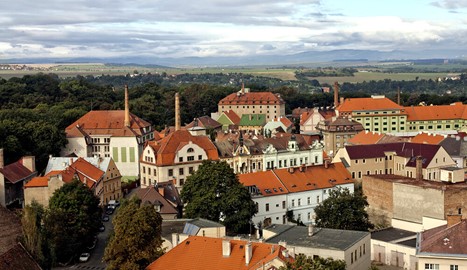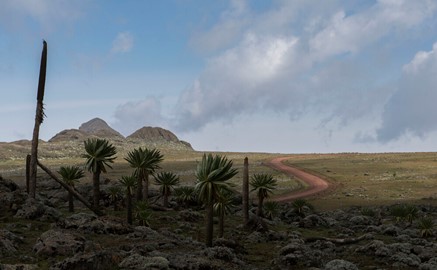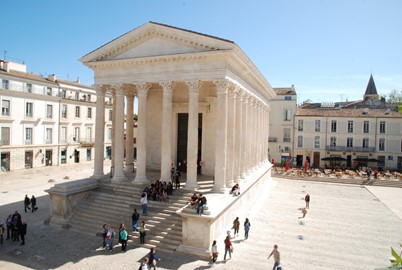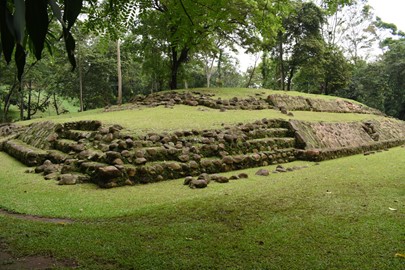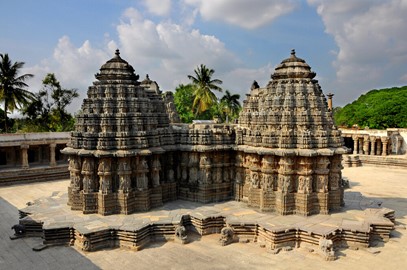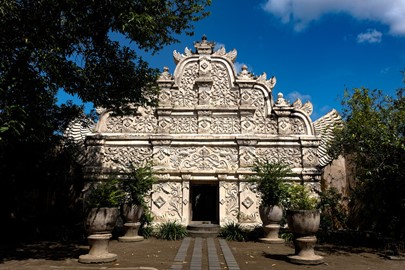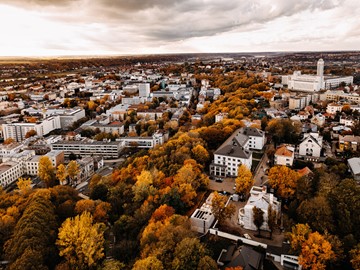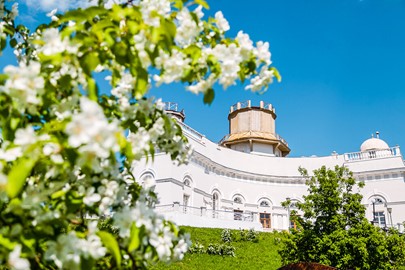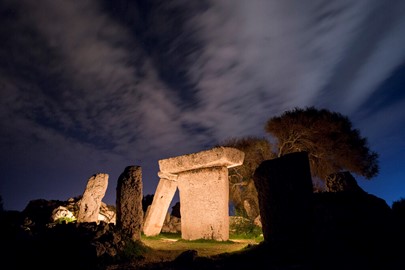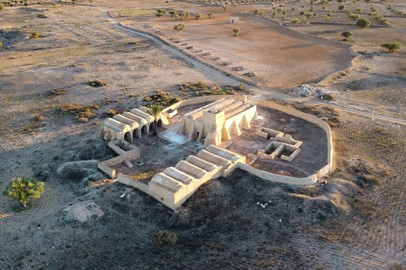search
Cold Winter Deserts of Turan
The Cold Winter Deserts of Turan, a UNESCO World Heritage site inscribed in September 2023, span Kazakhstan, Turkmenistan, and Uzbekistan, covering 14 protected areas across Central Asia’s temperate zone. Recognized as the world’s first listed cold winter desert, this transnational site stretches over 1,500 km, showcasing extreme climates with frigid winters and scorching summers, alongside diverse desert ecosystems. Home to unique flora like saxaul forests and endangered fauna such as the goitered gazelle ... Read More
Memorial sites of the Rwanda Genocide
The Memorial Sites of the Rwanda Genocide, a UNESCO World Heritage site inscribed in September 2023, consist of four key locations in Rwanda—Murambi, Nyamata, Kigali, and Bisesero—commemorating the 1994 genocide that claimed over 800,000 lives. These sites, including mass graves, churches turned killing grounds, and a resistance hill, preserve evidence of the atrocities with human remains and artifacts, serving as places of mourning and education. Rwanda’s fifth UNESCO listing, they stand as a stark reminde... Read More
Uruq Bani Ma’arid
Uruq Bani Ma’arid, a UNESCO World Heritage site in Saudi Arabia inscribed in September 2023, is a vast nature reserve in the western Empty Quarter, spanning over 12,700 square kilometers of dunes, plateaus, and gravel plains. As Saudi Arabia’s first natural UNESCO site and seventh overall, it protects a pristine desert ecosystem with reintroduced species like the Arabian oryx and critically endangered fauna such as the sand cat. Located along an ancient incense trade route, it blends ecological significance... Read More
Tugay forests
The Tugay Forests of the Tigrovaya Balka Nature Reserve, a UNESCO World Heritage site in Tajikistan inscribed in September 2023, span 50,000 hectares near the Afghan border along the Vakhsh River. As Tajikistan’s fourth UNESCO listing and first natural site, these rare floodplain ecosystems feature Asia’s largest tugay forests—riverine woodlands of poplar, tamarisk, and oleaster—supporting endangered species like the Bukhara deer and goitered gazelle. Protected since 1938, this biodiversity hotspot preserve... Read More
ESMA Museum and Site of Memory
The ESMA Museum and Site of Memory, a UNESCO World Heritage site in Argentina inscribed in September 2023, is a former naval school in Buenos Aires that served as a clandestine detention center during the 1976–1983 military dictatorship. Known as Argentina’s “Auschwitz,” it held around 5,000 of the 30,000 “disappeared,” with preserved spaces like the Officers’ Quarters revealing the horrors of torture and repression. As Argentina’s seventh UNESCO site and first tied to recent history, it stands as a global ... Read More
Anticosti
Anticosti, a UNESCO World Heritage site in Quebec, Canada, inscribed in September 2023, is a remote island in the Gulf of St. Lawrence renowned for its exceptional fossil record. Spanning over 9,200 square kilometers, it preserves the world’s most complete evidence of marine life from 447 to 437 million years ago, documenting Earth’s first mass extinction. Protected within a national park, biodiversity reserve, and ecological reserves, its untouched cliffs, rivers, and 1,440+ fossil species make it a global... Read More
Zagori
The Zagori Cultural Landscape, a UNESCO World Heritage site in northwestern Greece inscribed in September 2023, spans the Pindus Mountains in Epirus, featuring 46 stone-built villages known as Zagorochoria. Nestled in a remote rural setting, these settlements, linked by stone bridges, cobbled paths, and staircases, showcase traditional architecture adapted to the rugged terrain, reflecting Byzantine and Ottoman influences from the 15th to 19th centuries. Recognized as Greece’s first modern-era cultural land... Read More
Evaporitic Karst and Caves
The Evaporitic Karst and Caves of Northern Apennines, a UNESCO World Heritage site in Italy inscribed in September 2023, span Emilia-Romagna’s gypsum landscapes, hosting over 900 caves formed by evaporite dissolution over 250 million years. Recognized as Italy’s 59th UNESCO site and its first geological listing, this 100-km network includes the world’s most extensive and colorful evaporitic karst, with rare minerals, deep shafts, and underground rivers shaped by Triassic and Messinian salinity crises. Prote... Read More
Eisinga Planetarium
The Eise Eisinga Planetarium, a UNESCO World Heritage site in the Netherlands inscribed in September 2023, is the world’s oldest working planetarium, built between 1774 and 1781 by amateur astronomer Eise Eisinga in Franeker, Friesland. Housed in his living room, this intricate mechanical model of the solar system, powered by a single pendulum clock driving nine weights, accurately tracks planetary orbits on a painted ceiling. Recognized as the Netherlands’ 13th UNESCO site, it reflects Enlightenment-era sc... Read More
Nyungwe National Park
Nyungwe National Park, a UNESCO World Heritage site in Rwanda inscribed in September 2023, spans 1,019 square kilometers of montane rainforest in the Albertine Rift, recognized as Rwanda’s fourth UNESCO listing. One of Africa’s oldest and most biodiverse forests, it harbors over 1,068 plant species, 13 primate species—including 500 chimpanzees—and rare birds like the great blue turaco, thriving at elevations up to 2,950 meters. Protected since 1933 and elevated to national park status in 2005, its pristine ... Read More
Jodensavanne Archaeological Site
The Jodensavanne Archaeological Site, a UNESCO World Heritage site in Suriname inscribed in September 2023, comprises the Jodensavanne Settlement and Cassipora Creek Cemetery, located along the Suriname River. Founded by Sephardic Jews in the 17th century, this autonomous community features ruins of the Americas’ earliest architecturally significant synagogue (1685), cemeteries, and brick foundations, reflecting its peak as a plantation hub with extensive privileges. Recognized as Suriname’s third UNESCO si... Read More
Si Thep
Si Thep, a UNESCO World Heritage site in Thailand’s Phetchabun province, inscribed in September 2023, is an ancient twin-town settlement from the Dvaravati Empire (6th–10th centuries CE). Located 340 km north of Bangkok, it features an Inner and Outer Town with moats, the massive Khao Klang Nok monument, and the Khao Thamorrat Cave, showcasing a blend of Indian-influenced architecture and the distinctive Si Thep School of Art. As Thailand’s seventh UNESCO site, this 1,500-year-old complex highlights its his... Read More
Wooden Hypostyle Mosques
The Wooden Hypostyle Mosques of Medieval Anatolia, a UNESCO World Heritage site in Turkey inscribed in September 2023, comprise five Seljuk-era mosques built between the late 13th and mid-14th centuries across Afyon, Ankara, Eskişehir, Konya, and Kastamonu provinces. Known as “forest mosques,” they feature masonry exteriors and interiors with multiple wooden columns supporting flat ceilings, showcasing exceptional woodcarving and nailless construction techniques. Recognized as Turkey’s 21st UNESCO site, the... Read More
Hopewell Ceremonial Earthworks
The Hopewell Ceremonial Earthworks, a UNESCO World Heritage site in Ohio, USA, inscribed in September 2023, encompass eight monumental complexes built by the Hopewell culture between 1 and 400 CE. Spanning Newark, Chillicothe, and other sites, these geometric enclosures—circles, squares, and octagons—crafted from earth, feature precise astronomical alignments and served as ceremonial hubs for a vast trade network across half of North America. As the USA’s 25th UNESCO site, they showcase pre-Columbian engine... Read More
Khinalig
Khinalig, a UNESCO World Heritage site in Azerbaijan inscribed in September 2023, is a high-mountain village in the Greater Caucasus, recognized for its cultural landscape and the 200-km Köç Yolu transhumance route. Perched at 2,350 meters, this 5,000-year-old settlement is home to the semi-nomadic Khinalig people, who maintain ancient traditions and a unique language while seasonally migrating livestock between mountain summer pastures and lowland winter plains. Featuring stone houses, sacred forest fragme... Read More
Zatec
Žatec and the Landscape of Saaz Hops, a UNESCO World Heritage site in Czechia inscribed in September 2023, is a historic hop-growing region in the Ústí nad Labem area along the Ohře River. Renowned for over 700 years of cultivating the prized Saaz hops, used in beers like Pilsner and Guinness, this site includes the well-preserved medieval town of Žatec, its 19th-century industrial quarter, and surrounding hop fields and villages like Trnovany and Stekník. As the world’s first hop-growing area on the UNESCO... Read More
Bale Mountains National Park
Bale Mountains National Park, a UNESCO World Heritage site in Ethiopia inscribed in September 2023, spans 215,000 hectares in the southeastern highlands, 400 km from Addis Ababa. Renowned for its dramatic landscapes—volcanic peaks, Afro-alpine plateaus, and the vast Harenna Forest—it harbors exceptional biodiversity, including the endangered Ethiopian wolf, mountain nyala, and Bale monkey, alongside 1,660 plant species, 177 endemic to Ethiopia. As a vital water source for millions across East Africa, this p... Read More
Maison Carrée of Nîmes
The Maison Carrée of Nîmes, a UNESCO World Heritage site in southern France inscribed in September 2023, is a remarkably preserved Roman temple completed around 7 CE during Augustus’s reign. Located in Nîmes, this 26-by-13-meter structure, built of local limestone with Corinthian columns, originally honored Gaius and Lucius Caesar and exemplifies early Imperial architecture with its perfect proportions and elevated podium. As France’s 50th UNESCO site and one of the world’s best-preserved Roman temples, it ... Read More
Tak’alik Ab’aj
Tak’alik Ab’aj, a UNESCO World Heritage site in Guatemala inscribed in September 2023, is an ancient archaeological park in Retalhuleu, thriving from the 9th century BCE to the 10th century CE. Located along the Pacific coast, this key trade hub blends Olmec and Maya influences, featuring over 240 monuments like stelae, a possible colossal head, and early hieroglyphs across four terraced groups. Recognized as Guatemala’s fourth UNESCO site, it showcases 1,700 years of cultural transition, urban planning, an... Read More
Sacred Ensembles of the Hoysalas
The Sacred Ensembles of the Hoysalas, a UNESCO World Heritage site in India inscribed in September 2023, comprise three 12th–13th-century temples—Chennakeshava in Belur, Hoysaleshwara in Halebid, and Keshava in Somanathapura—in Karnataka. Built by the Hoysala Empire, these masterpieces of Hindu architecture feature intricate soapstone carvings, stellate plans, and sanctuaries dedicated to Vishnu and Shiva, reflecting a peak of artistic and engineering innovation. As India’s 42nd UNESCO site, they highlight ... Read More
Yogyakarta
The Cosmological Axis of Yogyakarta, a UNESCO World Heritage site in Indonesia inscribed in September 2023, is a 6-km north-south corridor in southern-central Java, established in the 18th century by Sultan Mangkubumi. Linking Mount Merapi to the Indian Ocean, it centers on the Kraton (Sultan’s Palace) and includes landmarks like Tugu Monument and Panggung Krapyak, reflecting Javanese cosmological beliefs about life cycles and harmony. As Indonesia’s sixth cultural UNESCO site, this living heritage site sho... Read More
Modernist Kaunas
Modernist Kaunas, a UNESCO World Heritage site in Lithuania inscribed in September 2023, showcases the city’s interwar architecture from 1919 to 1939, when it served as the provisional capital after Vilnius’s occupation. Spanning Naujamiestis (New Town) and Žaliakalnis (Green Hill), this 455-hectare site features over 1,200 buildings blending Art Deco, functionalism, and local styles, reflecting rapid urbanization and national optimism. Recognized as Lithuania’s fifth UNESCO site, it includes landmarks like... Read More
Astronomical Observatories of Kazan Federal University
The Astronomical Observatories of Kazan Federal University, a UNESCO World Heritage site in the Russian Federation, consist of two historic facilities: the Kazan City Astronomical Observatory, built in 1837 on the university campus in central Kazan, and the suburban Engelhardt Astronomical Observatory, established in 1901, 24 kilometers west of the city. Recognized for their contributions to optical astronomy and astrophysics from the 19th and early 20th centuries, these well-preserved sites feature unique ... Read More
Talayotic Menorca
Talayotic Menorca, a UNESCO World Heritage site in Spain, encompasses a series of prehistoric archaeological sites across the Balearic island of Menorca, dating from the Bronze Age (1600 BCE) to the Late Iron Age (123 BCE). These well-preserved sites, set in agro-pastoral landscapes, feature distinctive cyclopean structures—built with large, mortarless stone blocks—including talayots (conical towers), taulas (T-shaped ritual monuments), and navetas (boat-shaped tombs). Recognized for their exceptional densi... Read More
Djerba
Djerba, a UNESCO World Heritage site in Tunisia, is a Mediterranean island renowned for its well-preserved cultural landscape, shaped by over 3,000 years of diverse human settlement. Spanning 514 square kilometers, it features traditional architecture, including whitewashed houses, fortified mosques, and underground oil presses, alongside historic trading hubs like Houmt Souk. Recognized for its unique blend of Berber, Arab, Jewish, and African influences, Djerba’s heritage reflects a resilient agro-pastora... Read More
